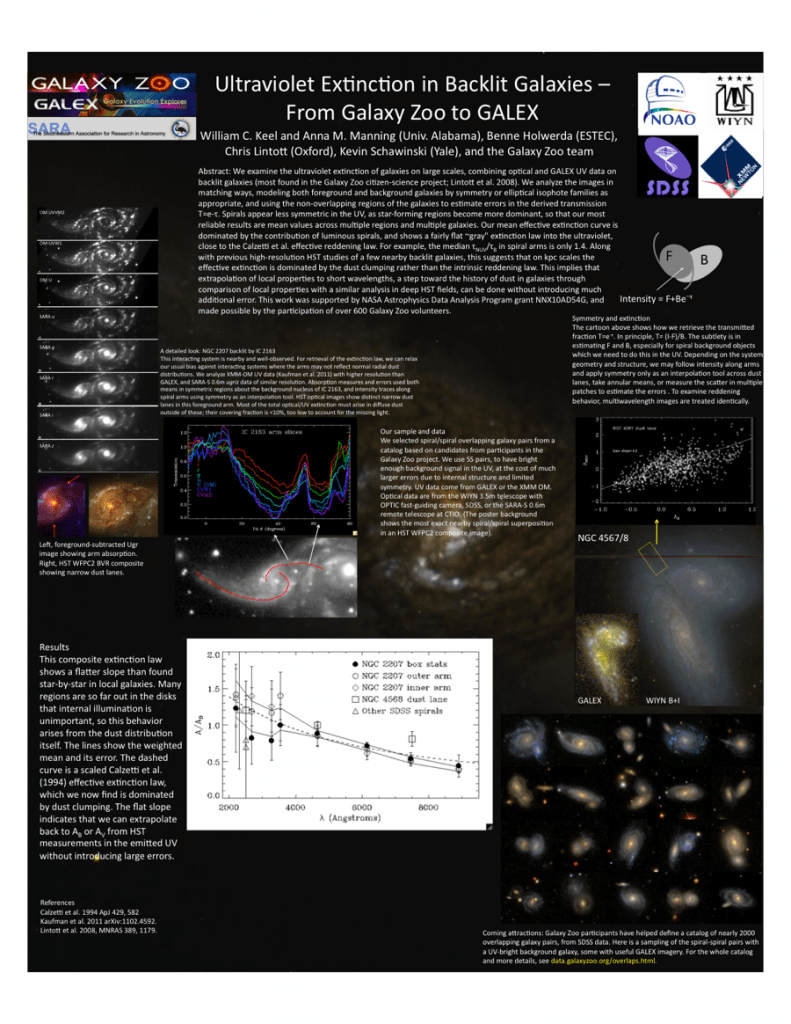Galaxy overlaps at the AAS
Wednesday’s session at the Austin meeting of the American Astronomical Society will include new results from the Galaxy Zoo sample of overlapping galaxies. Extending the work in Anna Manning’s Master’s thesis, this marks an extension that helps us look ahead to comparison with the higher-redshift Hubble Zoo overlaps. Specifically, we compared visible-light data with ultraviolet data (from the GALEX satellite or a UV/optical monitor instrument on the European Space Agency’s XMM-Newton) to compare the amounts of optical and ultraviolet absorption in galaxies. This tells us, for example, how much we should correct Hubble measurements for high-redshift galaxies, where visible-light filters sample light which was emitted in the ultraviplet, to compare them with the rich SDSS data which see the visible range emitted by nearby galaxies. This is a key tool in trying to use backlit galaxies to search for changes in the dust content of galaxies over cosmic time, by comparing Hubble and Sloan results. Along the way, we see evidence that a common result – the flat so-called Calzetti extinction law in star-forming galaxies – results from the way dust clumps into regions of larger and smaller extinction that we usually see blurred together, since we see this in regions so far out in some galaxies that internal illumination by the galaxy’s own stars doesn’t matter. Here’s the poster presentation:
(That had to be shrunk to fit the blog size limits but should still be just legible – click for a bigger PNG). NGC 2207 is outside the SDSS footprint but had such good data that gave nice error bars that it wound up featuring a whole image series. Now to go back and apply that new set of analysis routines to more GZ pairs…
In other news, a Canadian astronomer working with NED found a new use for the overlap catalog including the “reject” list – to distinguish galaxies in pairs which are seen moving together or apart, since we often have both redshifts and from the dust we know which one is in front.
And to reiterate what it says at the end of the abstract – we thank all the Zooites who have contributed to the overlap sample and made this work possible!

